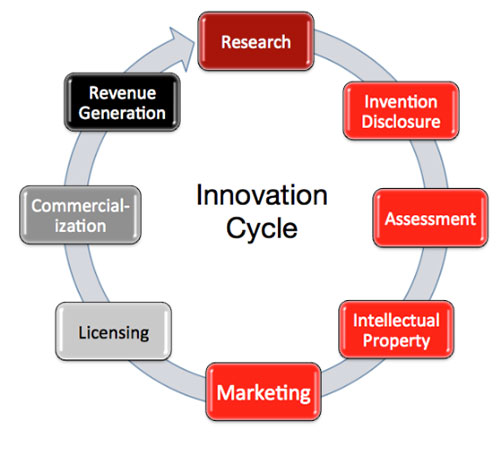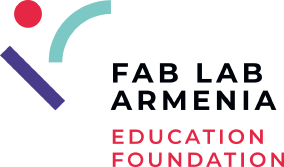Assignment for this week: Develop a plan for dissemination of your final project
Prepare drafts of your summary slide (presentation.png, 1920×1080) and video clip (presentation.mp4, 1080p HTML5, < ~minute, < ~10 MB) and put them in your root directory
- Introduction
This week is about inventions and intellectual property, how to defend your rights for inventions you have done. We have to develop a plan for dissemination of the final project.
I have two ideas for my final project and still not clear which one I’m going to do, because there are some missing components and depending on the situation with the lockdown I will decide either option.
In my country people in general are not familiar with the concepts such as Intellectual property or copyright. It’s not something I was well aware of, that’s why I had to do a lot of research. Here are very good resources:
- Introduction

Image credits https://www.depts.ttu.edu/research/commercialization/about/index.php
- InventionAn invention is a unique or novel device, method, composition or process. The invention process is a process within an overall engineering and product development process. It may be an improvement upon a machine or product or a new process for creating an object or a result. An invention that achieves a completely unique function or result may be a radical breakthrough. Such works are novel and not obvious to others skilled in the same field. An inventor may be taking a big step toward success or failure. Invention is also an important component of artistic and design creativity. Inventions often extend the boundaries of human knowledge, experience or capability.
- Intellectual propertyIntellectual property (IP) refers to creations of the mind, such as inventions; literary and artistic works; designs; and symbols, names and images used in commerce. IP is protected in law by, for example, patents, copyright and trademarks, which enable people to earn recognition or financial benefit from what they invent or create. Most known types of intellectual property are :
- Copyright – Copyright is a legal term used to describe the rights that creators have over their literary and artistic works.
- Patents – A patent is an exclusive right granted for an invention. Generally speaking, a patent provides the patent owner with the right to decide how – or whether – the invention can be used by others. In exchange for this right, the patent owner makes technical information about the invention publicly available in the published patent document.
- Trademarks – A trademark is a sign capable of distinguishing the goods or services of one enterprise from those of other enterprises.
- Industrial design – An industrial design constitutes the ornamental or aesthetic aspect of an article. A design may consist of three-dimensional features, such as the shape or surface of an article, or of two-dimensional features, such as patterns, lines or color.
- Geographical indications – Geographical indications and appellations of origin are signs used on goods that have a specific geographical origin and possess qualities, a reputation or characteristics that are essentially attributable to that place of origin. Most commonly, a geographical indication includes the name of the place of origin of the goods.
- Trade secrets – Trade secrets are IP rights on confidential information which may be sold or licensed. The unauthorized acquisition, use or disclosure of such secret information in a manner contrary to honest commercial practices by others is regarded as an unfair practice and a violation of the trade secret protection.
- IncomeIncome is money (or some equivalent value) that an individual or business receives, usually in exchange for providing a good or service or through investing capital. Individuals most often earn income through wages or salary. Businesses earn income from selling goods or services above their cost of production.
- Dissemination of my final project I came up with both of my final project ideas not for income but for helping people and making their life easier and safer. It would be a pleasure for me to make my projects available for as many people as possible, because I would feel that I did something meaningful.
If I decide to make a smart puzzle as a final project, I would like to give it Creative CommonsAttribution-NonCommercial-ShareAlike (CC BY-NC-SA) licence mark. This license lets others remix, tweak, and build upon your work non-commercially, as long as they credit you and license their new creations under the identical terms. As I work in school and have many friends and colleagues in the education sphere, I will present this project to the educational communities, they can freely use and develop the idea to help as many kids as possible.
For the bicycle tail bag project I would prefer Attribution ShareAlike (CC BY-SA) licence from Creative Commons. This license lets others remix, tweak, and build upon your work even for commercial purposes, as long as they credit you and license their new creations under the identical terms.
I will promote this project in social media and different groups of cyclists, outdoor departments of the schools and anyone can take the idea, develop and use it, which will bring a safer situation on the roads. - ConclusionI have learned about invention, Intellectual property and income, types Intellectual property rights. This page will be updated in future, as because of the situation with COVID19 some details regarding my final project are not clear.
Category:
AlumniDate:
February 3, 2022



